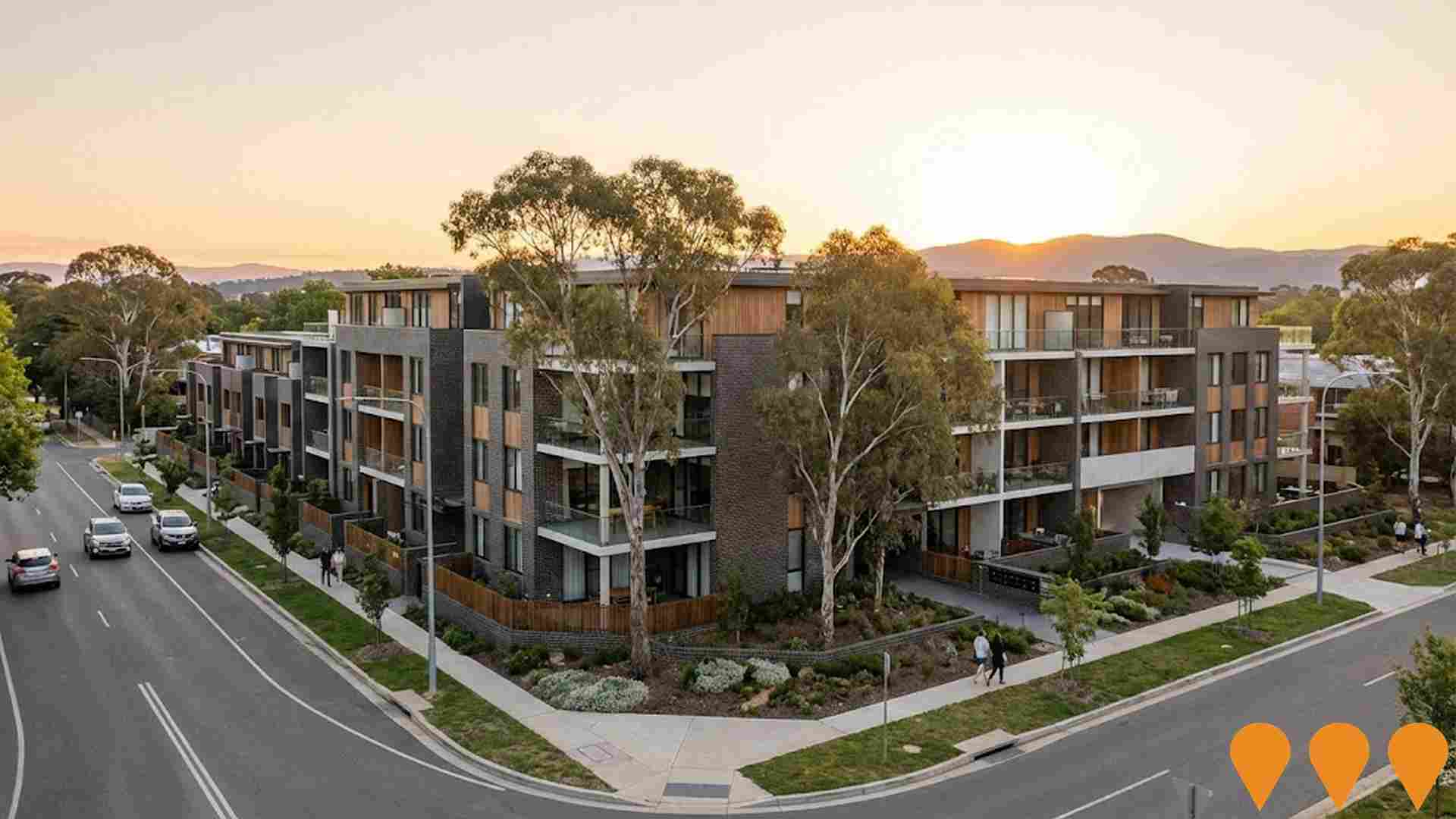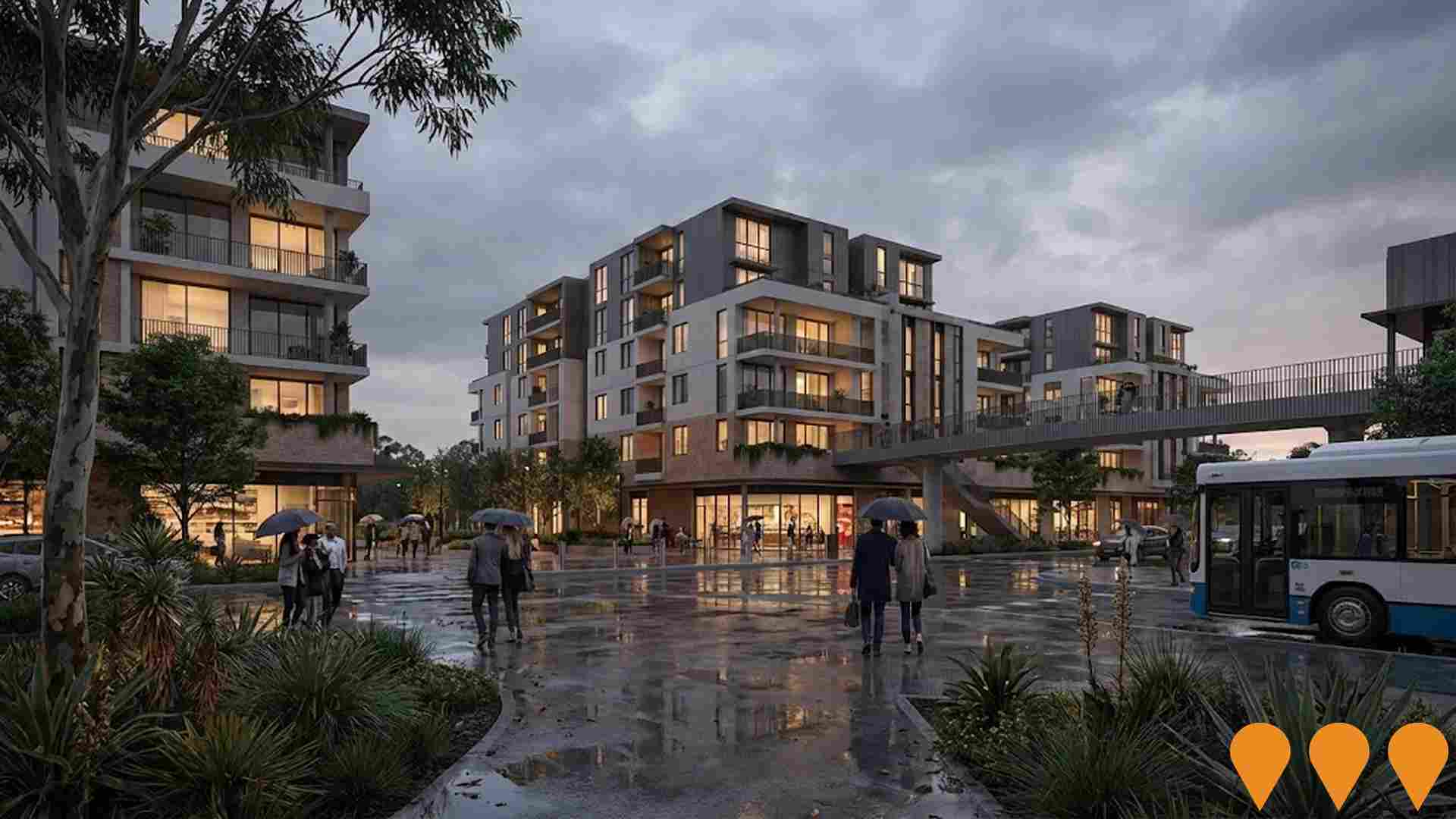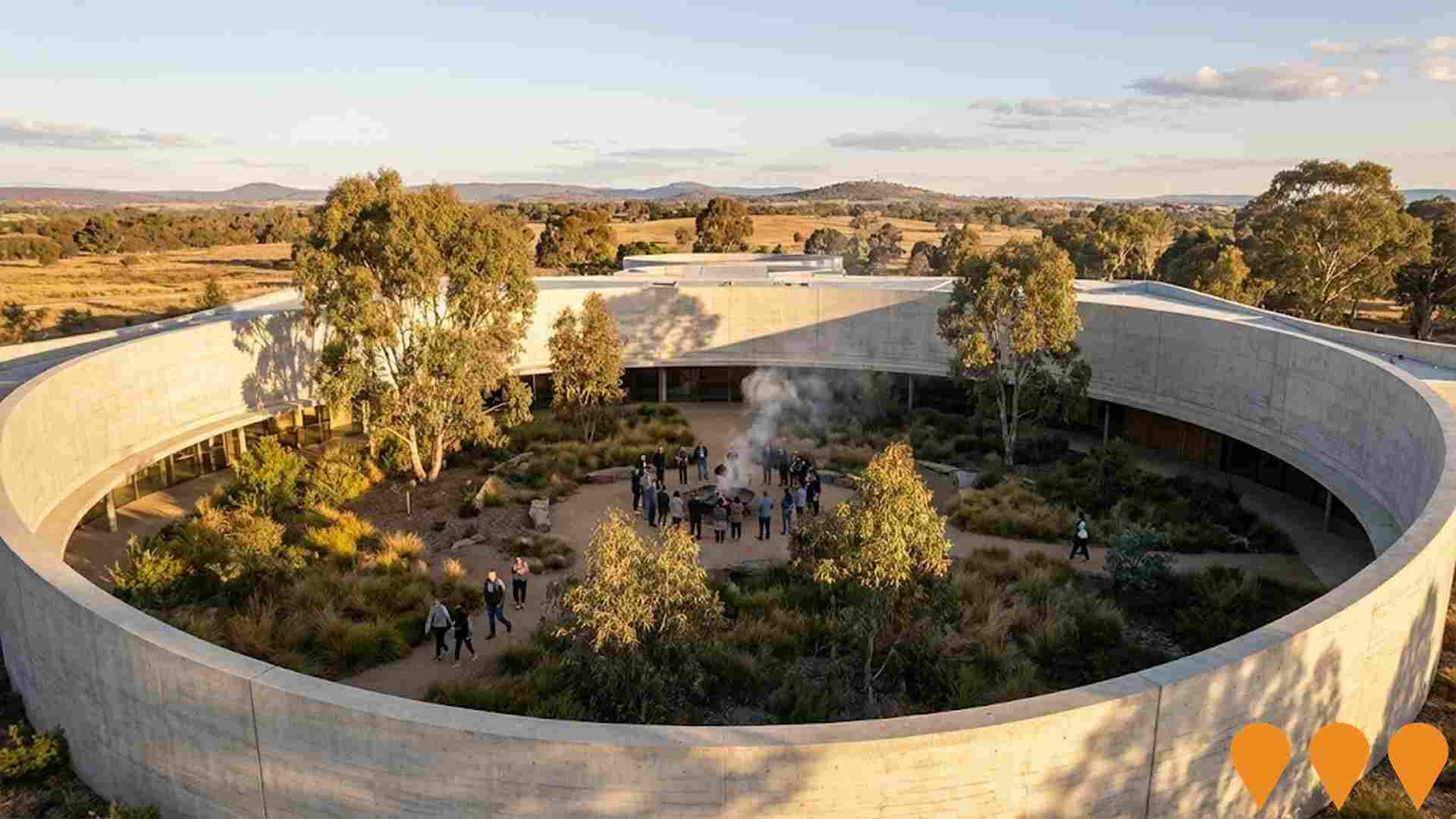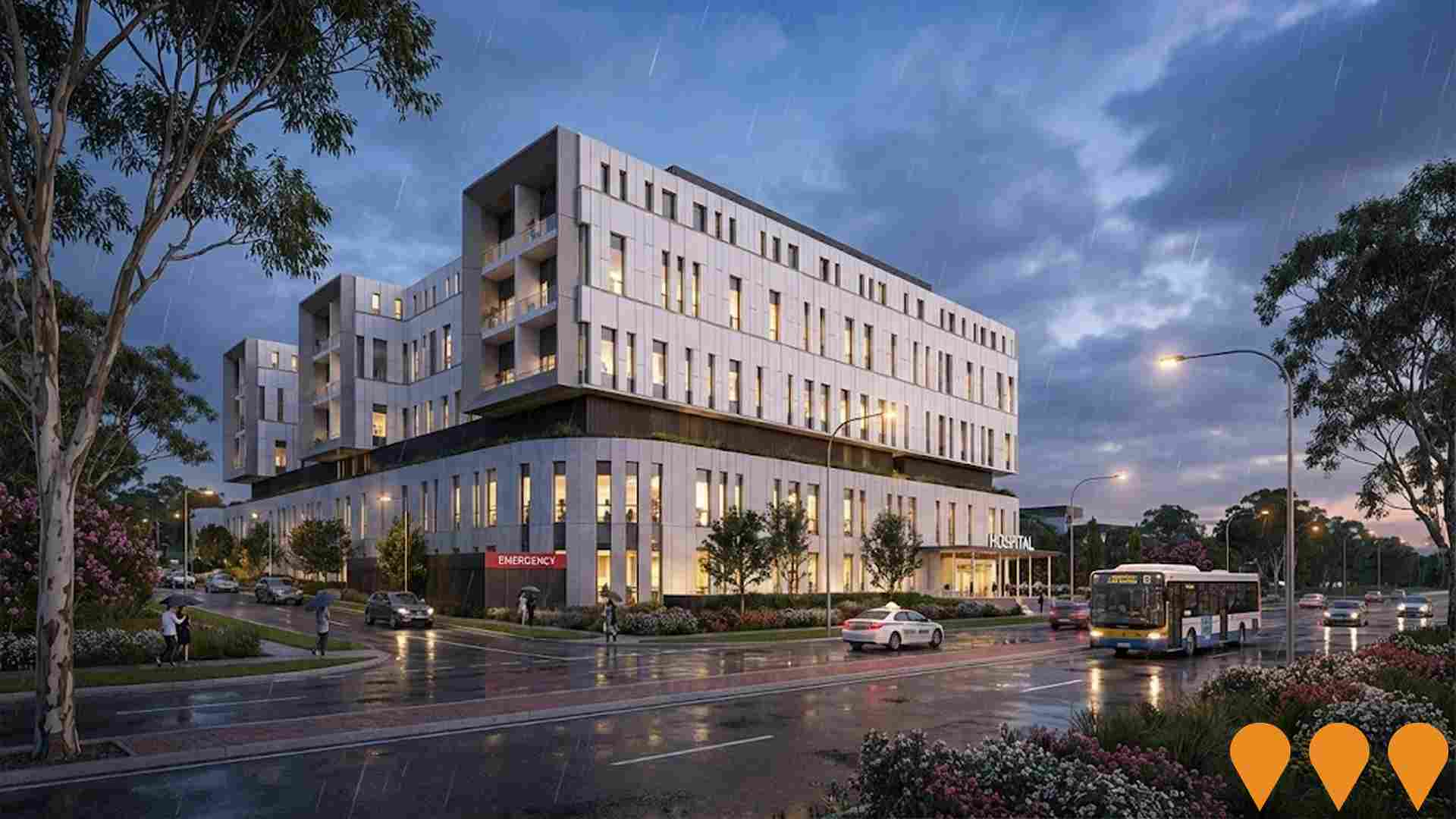Chart Color Schemes
est. as @ -- *
ABS ERP | -- people | --
2021 Census | -- people
Sales Activity
Curious about local property values? Filter the chart to assess the volume and appreciation (including resales) trends and regional comparisons, or scroll to the map below view this information at an individual property level.
Find a Recent Sale
Sales Detail
Population
Population growth drivers in Narrabundah are strong compared to national averages based on AreaSearch's ranking of recent, and medium to long-term trends
Narrabundah's population is approximately 6,910 as of November 2025. This figure represents an increase of 455 people, a 7.0% rise since the 2021 Census which reported a population of 6,455. The growth is inferred from ABS estimates; Narrabundah had an estimated resident population of 6,896 in June 2024 and has seen 122 new addresses validated since the Census date. This results in a population density ratio of 1,689 persons per square kilometer, higher than the average across national locations assessed by AreaSearch. Narrabundah's growth rate exceeds that of both the state (5.9%) and its SA4 region, positioning it as a growth leader. Overseas migration contributed approximately 67.1% to overall population gains in recent periods.
AreaSearch uses ABS/Geoscience Australia projections for each SA2 area, released in 2024 with 2022 as the base year; for areas not covered and years post-2032, ACT Government's SA2 area projections are adopted. Demographic trends project an above median population growth for Narrabundah, with an expected expansion of 1,211 persons by 2041 based on latest numbers, indicating a total gain of 17.3% over the 17-year period.
Frequently Asked Questions - Population
Development
Recent residential development output has been above average within Narrabundah when compared nationally
Narrabundah has seen approximately 34 new homes approved annually. Over the past five financial years, from FY21 to FY25, around 170 homes were approved, with an additional 5 approved in FY26 so far. This results in about 3.5 new residents per year for every home built during these years.
The demand significantly outpaces supply, which can put upward pressure on prices and increase competition among buyers. The average construction value of new homes is $274,000. In the current financial year, there have been $19.8 million in commercial approvals, indicating moderate levels of commercial development. Compared to the Australian Capital Territory, Narrabundah records around 59% of the building activity per person and ranks among the 48th percentile nationally, leading to relatively constrained buyer choice and interest in existing properties. New developments consist of 50% detached houses and 50% attached dwellings, marking a shift from the current housing pattern of 68% houses.
This focus on higher-density living creates more affordable entry points for downsizers, investors, and first-home buyers. The location has approximately 345 people per dwelling approval, reflecting an established area. Looking ahead, Narrabundah is expected to grow by 1,197 residents through to 2041. Construction is maintaining a reasonable pace with projected growth, although buyers may encounter growing competition as the population increases.
Frequently Asked Questions - Development
Infrastructure
Narrabundah has moderate levels of nearby infrastructure activity, ranking in the 49thth percentile nationally
Changes to local infrastructure significantly impact an area's performance. AreaSearch has identified four projects that could affect this region: Narrabundah Village Precinct Renewal (Iluka & Boolimba), Griffith-Narrabundah Community Centre & Oval Upgrade, Narrabundah Long Stay Caravan Park Redevelopment, and The Establishment Narrabundah. Below is a list of those most relevant projects.
Professional plan users can use the search below to filter and access additional projects.
INFRASTRUCTURE SEARCH
 Denotes AI-based impression for illustrative purposes only, not to be taken as definitive under any circumstances. Please follow links and conduct other investigations from the project's source for actual imagery. Developers and project owners wishing us to use original imagery please Contact Us and we will do so.
Denotes AI-based impression for illustrative purposes only, not to be taken as definitive under any circumstances. Please follow links and conduct other investigations from the project's source for actual imagery. Developers and project owners wishing us to use original imagery please Contact Us and we will do so.
Frequently Asked Questions - Infrastructure
Canberra Hospital Master Plan
Long-term transformation of Canberra Hospital campus (2021-2041). The new Critical Services Building (Building 5) opened in 2023. Multiple stages are now in construction or detailed planning, including SPIRE Stage 1 (new emergency, surgical and intensive care facilities) and ongoing campus renewal works to deliver modern clinical facilities.

Enhanced bus and light rail corridors (Belconnen & Queanbeyan to Central Canberra)
ACT is progressing an integrated program to enhance high-frequency bus and future light rail corridors that link Belconnen and Queanbeyan with central Canberra. Light Rail Stage 2A (City to Commonwealth Park) commenced construction in early 2025 with services targeted from 2028, while planning and approvals continue for Stage 2B to Woden. The ACT Government has acknowledged and is planning upgrades for the Belconnen-to-City bus corridor as groundwork for a future east-west light rail Stage 3, and is coordinating cross-border public transport initiatives with NSW through the Queanbeyan Region Integrated Transport Plan and the ACT-NSW MoU for Regional Collaboration.
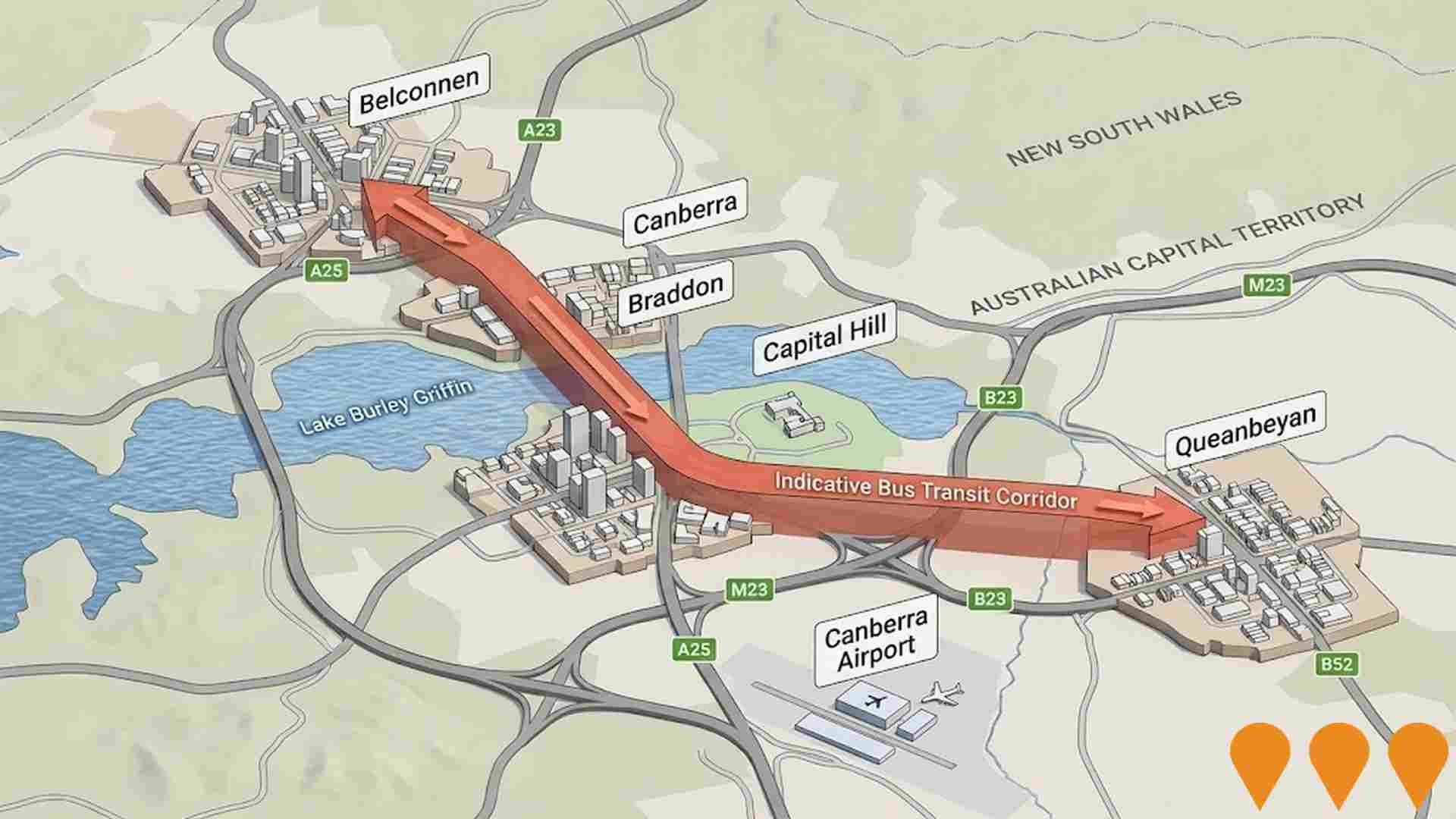
HumeLink
HumeLink is a new 500kV transmission line project connecting Wagga Wagga, Bannaby, and Maragle, spanning approximately 365 km. It includes new or upgraded infrastructure at four locations and aims to enhance the reliability and sustainability of the national electricity grid by increasing the integration of renewable energy sources such as wind and solar.
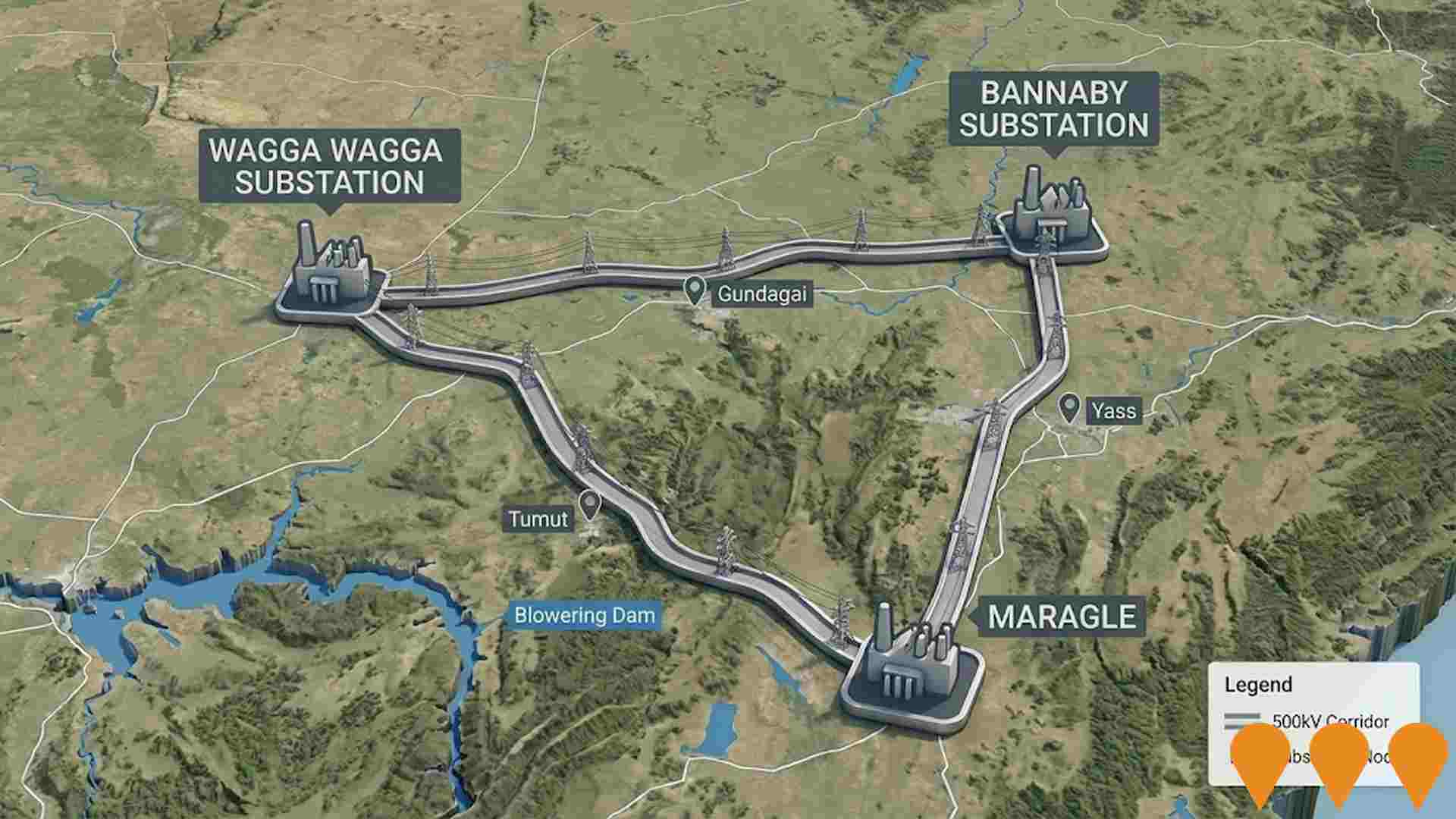
Griffith-Narrabundah Community Centre & Oval Upgrade
New multi-purpose community centre and upgrades to Griffith Oval including new pavilion, play spaces and improved amenities serving both Griffith and Narrabundah residents.

Queanbeyan Regional Integrated Transport Plan
Comprehensive transport planning initiative with 64 key actions for next 10 years. Addresses road safety, active transport connectivity, public transport availability, and future transport needs. Improved connections between Queanbeyan and ACT.
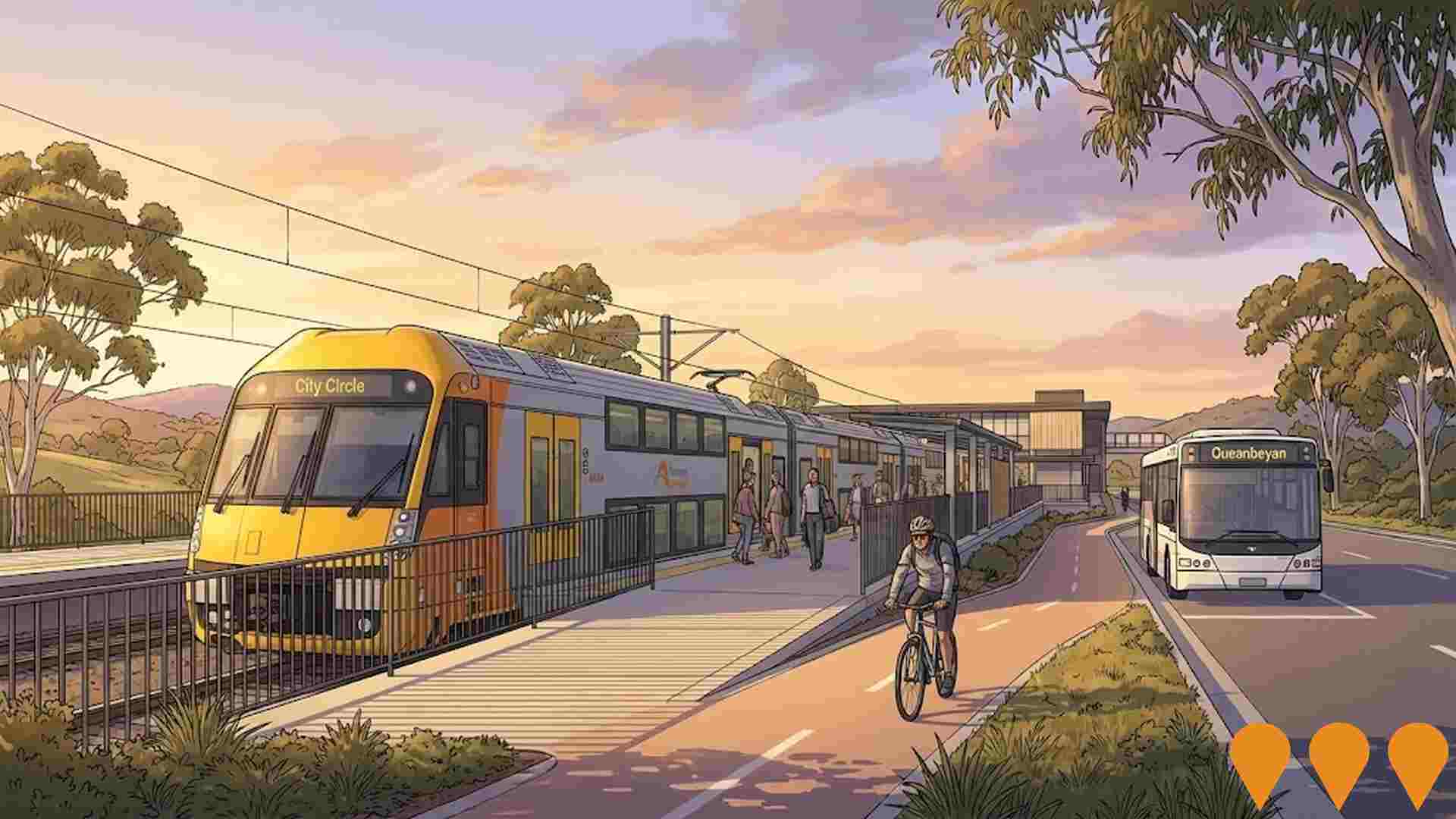
Big Canberra Battery (Williamsdale BESS)
A 250 MW / 500 MWh battery energy storage system at Williamsdale in southern Canberra, delivered by Eku Energy as Stream 1 of the ACT Government's Big Canberra Battery. Construction commenced in November 2024 with partners CPP and Tesla supplying Megapack systems. The asset will connect to Evoenergy's 132 kV network near the Williamsdale substation to provide two hours of dispatchable power, grid services and reliability for the ACT. Target operations in 2026.
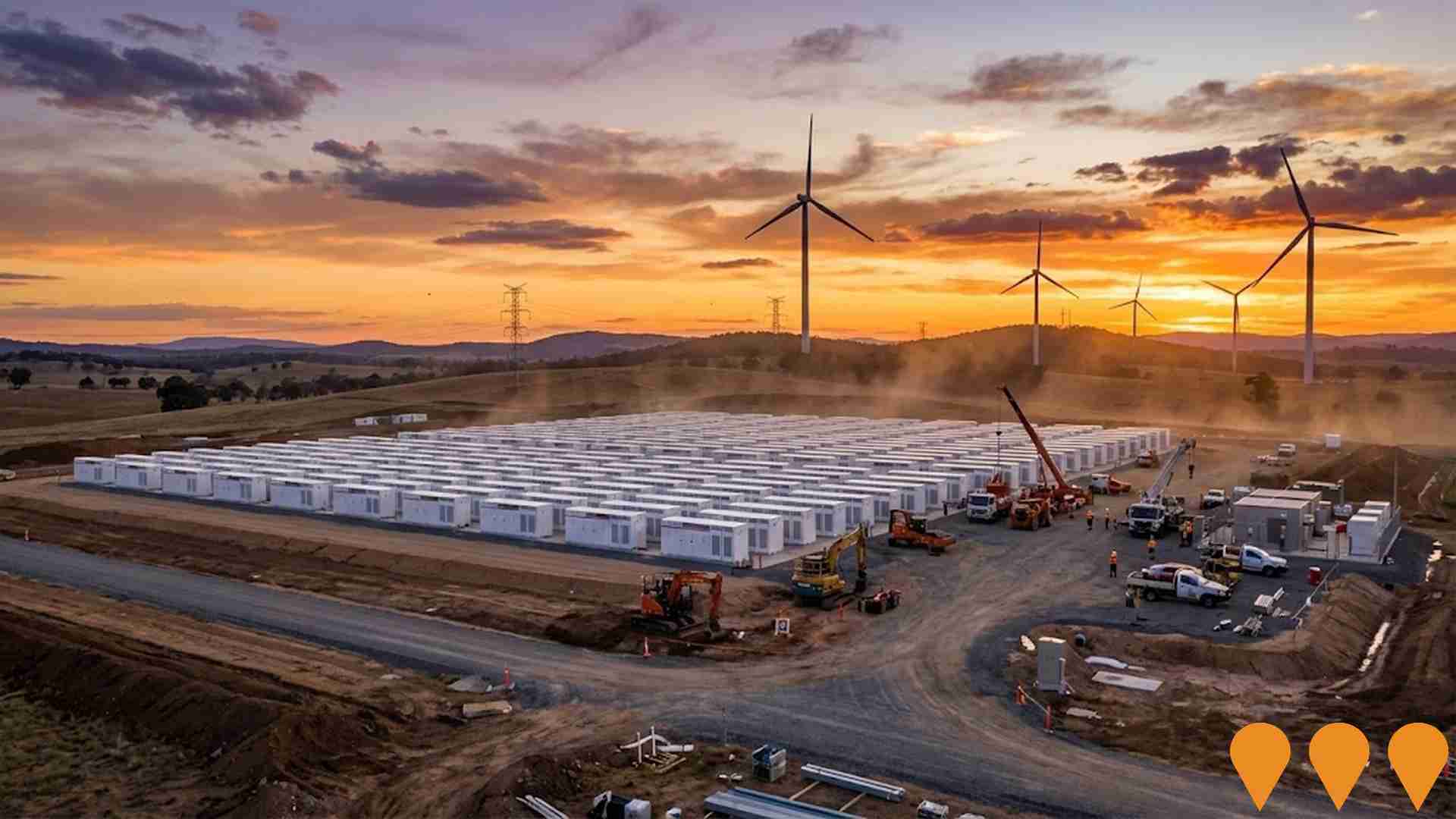
Narrabundah Village Precinct Renewal (Iluka & Boolimba)
Ongoing precinct renewal in Narrabundah's established village centre supporting mixed-use development, improved public realm, and additional housing around the local shops.
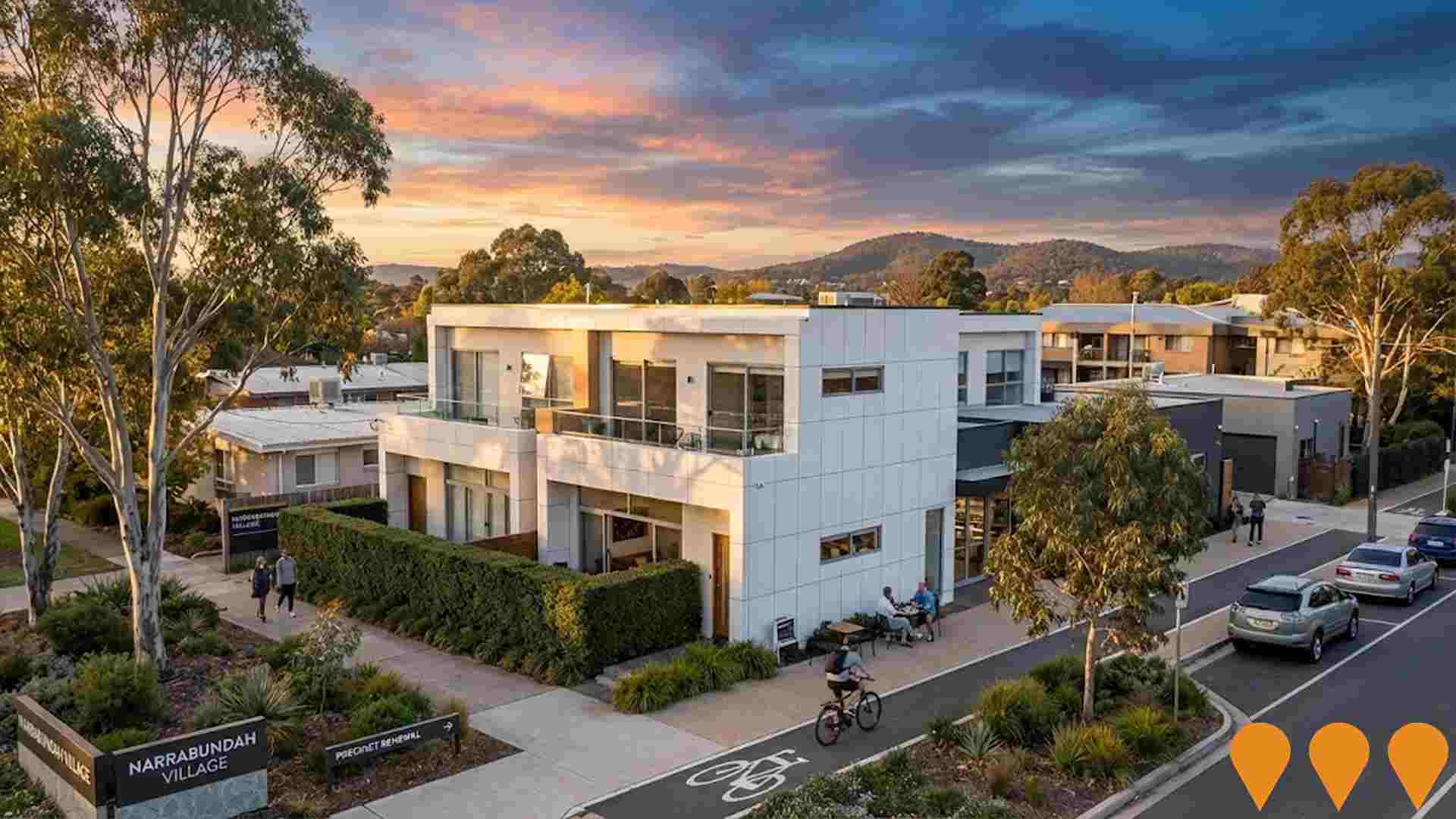
Narrabundah Long Stay Caravan Park Redevelopment
Major redevelopment of the former Narrabundah Long Stay Caravan Park into a contemporary residential community featuring 120 new homes including townhouses and apartments, completed in 2023.
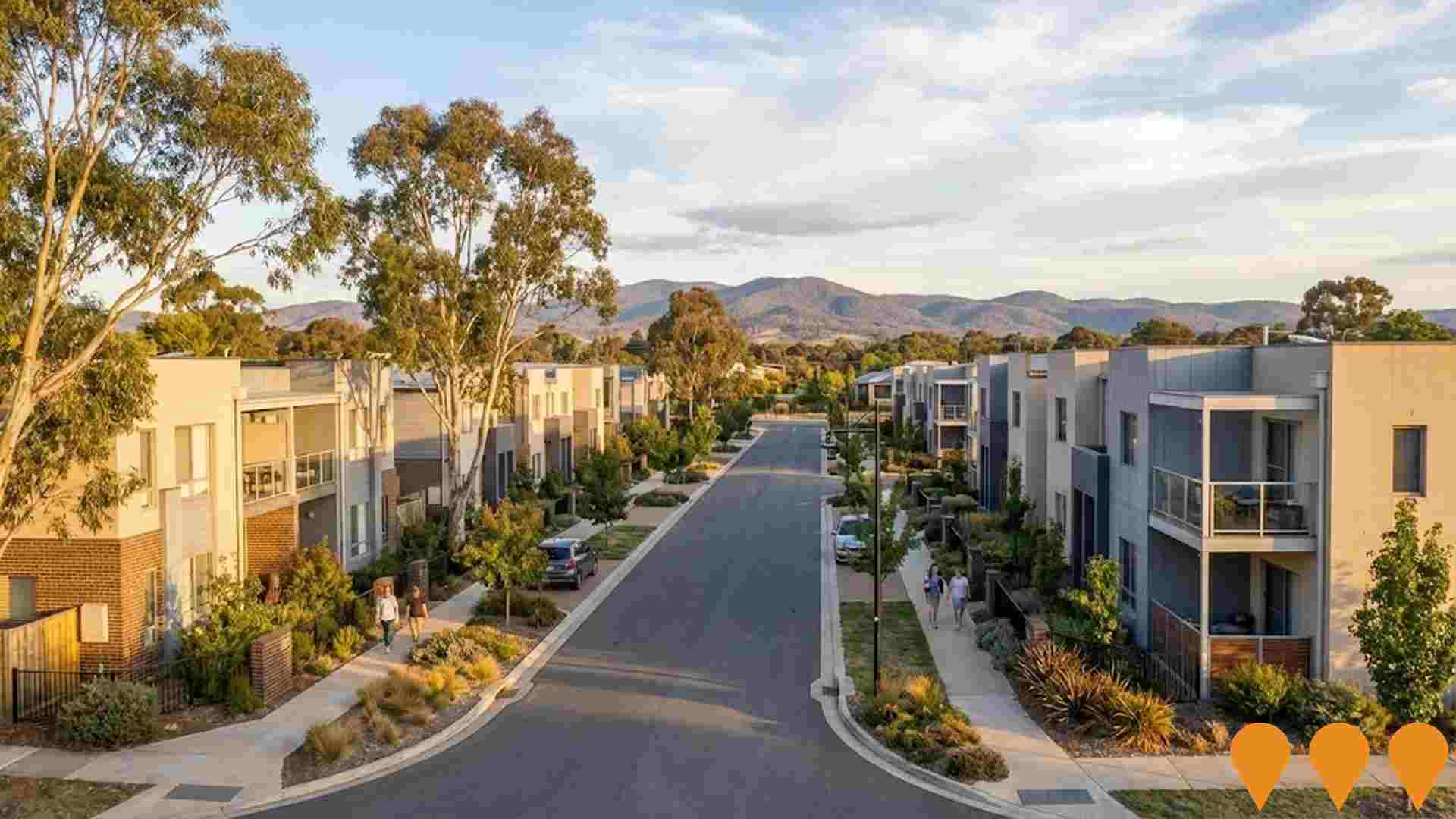
Employment
AreaSearch assessment positions Narrabundah ahead of most Australian regions for employment performance
Narrabundah has a highly educated workforce with strong representation in professional services. Its unemployment rate was 3.1% as of June 2025.
This is 0.3% lower than the Australian Capital Territory's rate of 3.4%. Employment growth over the past year was estimated at 2.8%. As of June 2025, there were 3,723 residents in work.
Workforce participation in Narrabundah was 62.7%, compared to the Australian Capital Territory's 69.6%. The dominant employment sectors among Narrabundah residents include public administration & safety, professional & technical services, and health care & social assistance. Education & training has limited presence with 8.5% employment compared to the regional average of 9.6%. Over the 12 months to June 2025, employment in Narrabundah increased by 2.8%, while the labour force increased by 1.6%. This resulted in a fall in unemployment of 1.1 percentage points. In contrast, Australian Capital Territory experienced employment growth of 1.9% and labour force growth of 1.6%, with a drop in unemployment of 0.3 percentage points. Jobs and Skills Australia's national employment forecasts from May 2025 suggest that national employment will expand by 6.6% over five years and 13.7% over ten years. Applying these projections to Narrabundah's employment mix suggests local growth of approximately 6.5% over five years and 13.2% over ten years, based on a simple weighting extrapolation for illustrative purposes.
Frequently Asked Questions - Employment
Income
The economic profile demonstrates exceptional strength, placing the area among the top 10% nationally based on comprehensive AreaSearch income analysis
Narrabundah's median income among taxpayers was $69,459 in financial year 2022. The average income stood at $85,655 during the same period. These figures compare to the Australian Capital Territory's median and average incomes of $68,678 and $83,634 respectively. By September 2025, current estimates suggest Narrabundah's median income will be approximately $78,905 and the average income around $97,304, based on a Wage Price Index growth of 13.6% since financial year 2022. In Census 2021, Narrabundah's household, family, and personal incomes ranked highly nationally, between the 86th and 93rd percentiles. Income brackets indicate that 28.0% of locals (1,934 people) fall into the $4000+ category, differing from the broader area where the $1,500 - $2,999 category predominates at 34.3%. A substantial proportion of high earners, 40.6% above $3,000 per week, suggests strong economic capacity throughout Narrabundah. Housing accounts for 15.1% of income in the area, while residents rank within the 86th percentile for disposable income. The area's SEIFA income ranking places it in the 8th decile.
Frequently Asked Questions - Income
Housing
Narrabundah displays a diverse mix of dwelling types, with ownership patterns similar to the broader region
Narrabundah's dwellings, as per the latest Census, consisted of 68.2% houses and 31.8% other dwellings (semi-detached, apartments, 'other' dwellings). This compares to the Australian Capital Territory's 40.7% houses and 59.3% other dwellings. Home ownership in Narrabundah stood at 27.9%, with mortgaged dwellings at 34.2% and rented ones at 37.9%. The median monthly mortgage repayment was $2,392, higher than the Australian Capital Territory average of $2,275. The median weekly rent figure was $440, compared to the Australian Capital Territory's $500. Nationally, Narrabundah's mortgage repayments were significantly higher at $1,863 and rents substantially above the national figure of $375.
Frequently Asked Questions - Housing
Household Composition
Narrabundah features high concentrations of group households and lone person households, with a higher-than-average median household size
Family households constitute 64.8% of all households, including 29.9% couples with children, 23.2% couples without children, and 10.8% single parent families. Non-family households comprise the remaining 35.2%, with lone person households at 30.3% and group households making up 4.8%. The median household size is 2.4 people, larger than the Australian Capital Territory average of 2.2.
Frequently Asked Questions - Households
Local Schools & Education
Narrabundah shows strong educational performance, ranking in the upper quartile nationally when assessed across multiple qualification and achievement indicators
Narrabundah's educational attainment is notably higher than national averages. Among residents aged 15 and above, 54.6% have university qualifications, compared to Australia's 30.4%. Bachelor degrees are the most common at 28.4%, followed by postgraduate qualifications at 20.5%, and graduate diplomas at 5.7%. Vocational pathways account for 19.9%, with advanced diplomas at 8.8% and certificates at 11.1%.
Educational participation is high, with 33.1% of residents currently enrolled in formal education. This includes 10.4% in primary education, 8.7% in secondary education, and 7.8% pursuing tertiary education. Narrabundah's three schools have a combined enrollment of 1,173 students as of the latest data. The area has above-average socio-educational conditions, with an ICSEA score of 1064. Education provision is balanced, with two primary and one secondary school serving distinct age groups. School places per 100 residents stand at 17.0, below the regional average of 31.2, suggesting some students may attend schools in adjacent areas.
Frequently Asked Questions - Education
Schools Detail
Nearby Services & Amenities
Transport
Transport servicing is good compared to other areas nationally based on assessment of service frequency, route connectivity and accessibility
Narrabundah has 51 active public transport stops, all of which are bus stops. These stops are served by 22 different routes that together facilitate 1,275 weekly passenger trips. The area's transport accessibility is rated excellent, with residents on average located 178 meters from the nearest stop.
Across all routes, service frequency averages 182 trips per day, equating to approximately 25 weekly trips per individual stop.
Frequently Asked Questions - Transport
Transport Stops Detail
Health
Narrabundah's residents are healthier than average in comparison to broader Australia with a fairly standard level of common health conditions seen across both young and old age cohorts
Health data shows Narrabundah residents have relatively positive health outcomes, with common conditions seen across both young and old age groups. Private health cover is exceptionally high at approximately 63% of the total population (4,374 people), compared to 78.0% in Australian Capital Territory and a national average of 55.3%. The most common medical conditions are mental health issues and arthritis, affecting 9.2% and 7.8% of residents respectively.
A majority, 68.3%, report being clear of medical ailments, compared to 69.8% in Australian Capital Territory. The area has 20.0% of residents aged 65 and over (1,382 people). Health outcomes among seniors are above average, broadly aligning with the general population's health profile.
Frequently Asked Questions - Health
Cultural Diversity
Narrabundah was found to be more culturally diverse than the vast majority of local markets in Australia, upon assessment of a range of language and cultural background related metrics
Narrabundah, surveyed in June 2016, showed higher cultural diversity than most local areas. Overseas-born residents comprised 29.9%, while those speaking a language other than English at home totalled 24.8%. Christianity was the predominant religion (40.1%).
Judaism, though small (0.5%), exceeded the regional average of 0.6%. Top ancestral groups were English (23.2%), Australian (22.2%), and Other (11.7%). Notable ethnic group divergences included French (1.0% vs regional 0.9%), Polish (1.1% vs 1.0%), and Russian (0.6% vs 0.4%).
Frequently Asked Questions - Diversity
Age
Narrabundah's population is slightly older than the national pattern
The median age in Narrabundah is 40 years, which exceeds the Australian Capital Territory's average of 35 years and is slightly higher than Australia's median age of 38 years. Compared to the Australian Capital Territory, Narrabundah has a higher proportion of residents aged 75-84 years (7.5%), but fewer residents aged 25-34 years (12.3%). Between the 2021 Census and the present day, the proportion of residents aged 75 to 84 years has increased from 5.5% to 7.5%, while the proportion of residents aged 5 to 14 years has decreased from 12.7% to 11.3%. By 2041, Narrabundah's age composition is expected to change significantly. The number of residents aged 75 to 84 years is projected to grow by 59%, reaching 827 people from the current figure of 520. This growth will be driven primarily by an aging population dynamic, with those aged 65 and above accounting for 57% of the projected population growth. Conversely, declines in population are projected for the age groups of 5 to 14 years and 25 to 34 years.
